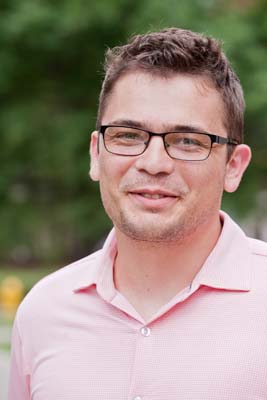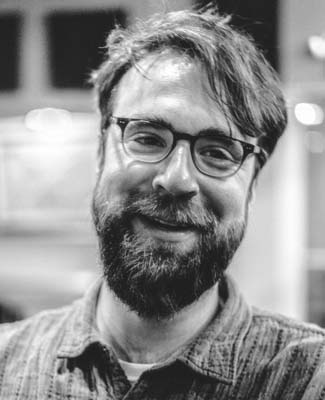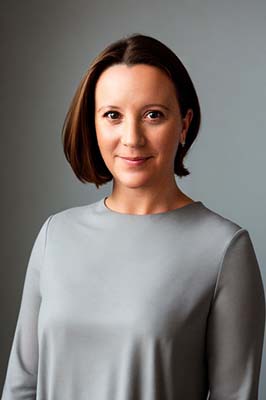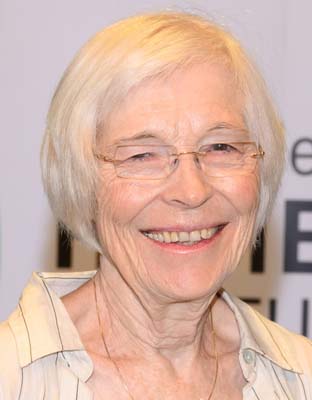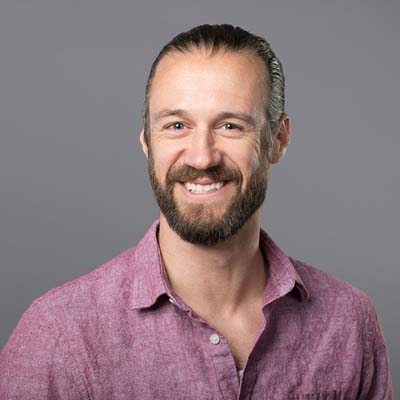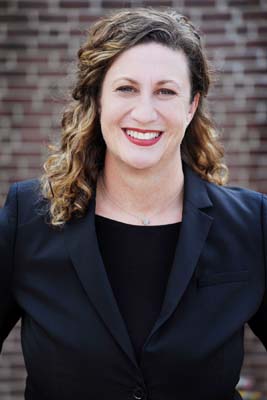This workshop will be streamed live on Zoom and recorded for later viewing on NIH VideoCast and YouTube. Please use the registration link below to sign up for information about the upcoming workshop.
Attendance is free for this event. Attendees may attend online via Zoom or in-person at the NIH Campus (Building 40, Room 1201/1203). The workshop includes 10 speakers (8 from academic institutions in the USA and Canada, 2 from the intramural research program). Tickets may be reserved online for either online or in-person attendance. .
Chris Baker, Ph.D.
Talk Title: Introduction to the workshop
Dr. Baker is Chief of the Unit on Learning and Plasticity in the Laboratory of Brain and Cognition. He received his B.A. in Neuroscience in 1995 from the University of Cambridge in England, and his Ph.D. in Psychology in 1999 from the University of St. Andrews in Scotland, where he worked with Dr. David Perrett on neurophysiological studies of visual perception. During a postdoctoral fellowship at the Center for the Neural Basis of Cognition in Pittsburgh, he worked with both Carl Olson and Marlene Behrmann on combined monkey neurophysiological and human behavioral studies of visual object representation and learning. In 2003, he moved to MIT to work with Nancy Kanwisher, using functional brain imaging techniques to investigate learning, plasticity and high-level vision in human cortex. Dr. Baker arrived at the NIMH in the fall of 2006.
----------------------------------------------------------------------------------------------------------------------------------------------------------
Joshua de Leeuw, Ph.D.
Talk Title: Eye tracking with a webcam for remote behavioral experiments: Current technology and a glimpse of what's next.
Josh de Leeuw is an associate professor of Cognitive Science and member of the program in Neurscience & Behavior at Vassar College. He received his PhD in Cognitive Science and Psychological & Brain Sciences from Indiana University. His work focuses on the development of open source software to faciliate internet-scale behavioral research, including the widely-used experiment software jsPsych. His lab is currently developing tools for automating metadata collection with NIH funding, and building an open-source ecosystem for behavioral experiments with NSF funding.
----------------------------------------------------------------------------------------------------------------------------------------------------------
Grace Edwards, Ph.D.
Talk Title: Pre-saccadic information interacts with post-saccadic processing
Grace Edwards is a Staff Scientist in the Section on Learning and Plasticity in the Laboratory of Brain and Cognition. Her research focuses on the interaction between homotopic visual and attention areas, and the impact of that interaction on behavior. She investigates large- and fine-scale dependency within and between networks which result in stable sensory perception. To answer her research questions, she uses eye-tracking, brain stimulation with TMS and tES, and brain imaging using fMRI (3T & 7T) and EEG.
----------------------------------------------------------------------------------------------------------------------------------------------------------
Nicholas Gaspelin, Ph.D.
Talk Title: Are eye movements preceded by covert attention? Evidence from the N2pc
Nicholas Gaspelin is an associate professor in the Department of Psychological Sciences at the University of Missouri. His research aims to understand the cognitive and neural mechanisms of selective attention in humans using psychophysical techniques, eye tracking, and electroencephalograms (EEG). Much of his research has evaluated whether certain kinds of salient information have the power to “capture” attention and how individuals learn to ignore distracting information. He is currently funded by an NSF CAREER award to study the relationship of eye movements and covert attentional processes using concurrent EEG and eye-tracking.https://gaspelinlab.missouri.edu
----------------------------------------------------------------------------------------------------------------------------------------------------------
Julie Golomb, Ph.D.
Talk Title: Visual stability – and instability – across saccades
Dr. Julie Golomb is a Professor of Psychology at The Ohio State University, where she directs the Vision and Cognitive Neuroscience Lab and is head of the Cognitive Neuroscience PhD program. She received her Ph.D. in Neuroscience from Yale University and was a post-doctoral fellow at MIT before joining the faculty at Ohio State in 2012. Her research explores the interactions between visual attention, perception, memory, and eye movements. Her lab uses a combination of methodologies including human behavior, neuroimaging, and computational analyses, supported by grants from the National Institutes of Health and National Science Foundation.https://u.osu.edu/golomblab/
----------------------------------------------------------------------------------------------------------------------------------------------------------
Michelle Greene, Ph.D.
Talk Title: The Visual Experience Dataset: Exploring Vision 'In the Wild
Dr. Michelle R. Greene is an Assistant Professor of Psychology at Barnard College, Columbia University. She earned her Ph.D. from the Massachusetts Institute of Technology and completed postdoctoral fellowships at Harvard Medical School and Stanford University. She previously held the position of Assistant Professor of Neuroscience at Bates College before joining Barnard in 2023. Her work investigates the neural and computational mechanisms of visual perception and scene understanding, integrating techniques such as electroencephalography (EEG), machine learning, and eye tracking. Her current work is supported by a National Science Foundation CAREER award focused on measuring and assessing the impact of visual complexity.
----------------------------------------------------------------------------------------------------------------------------------------------------------
Mary Hayhoe, Ph.D.
Talk Title: Visual Decisions in Natural Action
Mary Hayhoe received her Ph D from UC San Diego, and is a Professor in the Center for Perceptual Systems at the University of Texas Austin (https://liberalarts.utexas.edu/cps/). She been a leader in the investigation of natural visually guided behavior in both real and virtual environments. She has expertise in human eye movements, especially how gaze behavior relates to attention, working memory, and cognitive goals.
----------------------------------------------------------------------------------------------------------------------------------------------------------
Mark Lescroart, Ph.D.
Talk Title: Searching for relationships between statistics of natural visual behavior and brain organization
Mark Lescroart is an assistant professor of psychology and a member of the Integrative Neuroscience Program at the University of Nevada, Reno. He got his Ph.D. at the University of Southern California working with Irving Biederman and did postdoctoral research at UC Berkeley working with Jack Gallant. He uses a combination of mobile eye tracking, fMRI, and computational modeling techniques to study how our brains transform patterns of light on our retinas into useful information about the world. He is interested in how different areas in the brain provide information about the shape of objects, the structure of space, and the locations of people and types of actions performed by them.http://piecesofmind.psyc.unr.edu
----------------------------------------------------------------------------------------------------------------------------------------------------------
Elisha P. Merriam, Ph.D.
Talk Title: The importance of eye tracking for fMRI
Eli Merriam is group leader in the Laboratory of Brain and Cognition in the intramural research program of the NIMH. Eli's research uses a combination of functional magnetic resonance imaging, computational modeling, and psychophysical measurements to link human perception to cortical brain activity. Eli received a PhD in the Center for the Neural Basis of Cognition (University of Pittsburgh & CMU) with Carol Colby, and did a postdoc at NYU (with David Heeger and Tony Movshon). Eli was an assistant professor (research track) at NYU before establishing his own group at NIH in 2016.
----------------------------------------------------------------------------------------------------------------------------------------------------------
Jennifer Ryan, Ph.D.
Talk Title: The intersection of memory and active vision
Dr. Ryan is the Anne and Max Tanenbaum Chair in Cognitive Neuroscience and Senior Scientist at the Rotman Research Institute at the Baycrest Academy for Research and Education, and Professor in the Department of Psychology and the Department of Psychiatry at the University of Toronto. Her research uses a converging methodologies approach—incorporating methods such as neuropsychological studies, eyetracking, neuroimaging (fMRI and MEG), and computational modelling—to comprehensively study the content and organization of memory. Through the fundamental understanding of memory, Dr. Ryan seeks to develop tools that provide early screening for neurodegeneration, and to develop cognitive strategies that may help individuals, such as older adults and amnesic cases, overcome, or otherwise circumvent, their memory deficits.https://drjenryan.com
----------------------------------------------------------------------------------------------------------------------------------------------------------
Caglar Tas, Ph.D.
Talk Title: The relationship between transsaccadic visual stability and visual working memory
Caglar Tas is an assistant professor in the Department of Psychology at the University of Tennessee, Knoxville. She received her M.A. from Bogazici University, Istanbul and her Ph.D. from the University of Iowa. Her research focuses on how visual information is represented and updated across saccadic eye movements and the role of visual working memory in transsaccadic perceptual processes. More recently, she has been investigating the neural mechanisms of transsaccadic perception using functional near-infrared spectroscopy (fNIRS).https://vpclab.weebly.com/
----------------------------------------------------------------------------------------------------------------------------------------------------------
The Center for Multimodal Neuroimaging is proud to announce the 2024 Workshop: Insights Into Cognitive And Neural Function Through Eye Tracking.


